Last Updated on April 9, 2025 by Owen McGab Enaohwo

Managing your processes can be overwhelming. You have to keep track of a lot of information and manage employees with different levels of expertise using the same systems.
Numerous companies attempt to address this issue by using software tools such as Guru and SweetProcess to create and manage various documents for more efficient workflow and process management.
Although Guru is well-known for its knowledge management capabilities, some users find its documentation features insufficient, especially when creating SOPs and policies. Consequently, many users are exploring alternative solutions like SweetProcess.
This guide will help you choose between two popular tools: Guru and SweetProcess. By comparing their features, functionalities, and practical applications, you will gain a better understanding of their capabilities and be able to select the best tool for your documentation needs.
Sign up for SweetProcess’s 14-day FREE trial to streamline your documentation.
Table of Contents
What is SweetProcess and Who Is It For?
SweetProcess’s Unique Selling Point
What Is Guru and Who Is It For?
Guru vs SweetProcess: Features at a Glance
Guru vs SweetProcess: For SOP Documentation
Guru vs SweetProcess: For Process Documentation
Guru vs SweetProcess: For Policy Documentation
Guru vs SweetProcess: Which Tool Is Better for You?
What Users Say About SweetProcess
Guru Drawbacks Based on Customer Reviews
Guru vs SweetProcess: Why SweetProcess Trumps Guru
What Is SweetProcess and Who Is It For?

SweetProcess is a web-based application that streamlines your process management by managing the documentation associated with your business processes.
It’s designed to be used by large organizations, small businesses, and various industries such as healthcare, manufacturing, retail, and technology to manage workflow, document procedures, policies, staff training requirements, and more.
Its primary users are business owners, managers, and team leaders responsible for overseeing and improving daily operations. Take Amy, the president and financial advisor of Thimbleberry Financial, for example. She was running a financial advisory firm, juggling complex processes, and striving for seamless operations but with little to show for it.
Initially, Amy relied on Microsoft Word documents to document their business processes, assuming they were sufficient. However, as the organization experienced turnover, the limitations of its documentation became apparent.
To address the growing inefficiencies, Amy’s business coach recommended SweetProcess. The comprehensive documentation in SweetProcess revolutionized Amy’s perception of adequate documentation. In Amy’s words, “By having SweetProcess, all of our team members can fix whatever is broken that they touch, and they don’t have to come to me and say, ‘Hey, Amy, fix this.'”
The integration of SweetProcess into Thimbleberry Financial’s operations improved training, eliminated information gaps, and enhanced workplace collaboration even without specific team members.
By simplifying complex processes, SweetProcess reduces the learning curve, allowing businesses to focus on what matters most—efficiently documenting and executing tasks.
Ready to experience the transformative power of SweetProcess for yourself? Sign up now for a free trial.
SweetProcess’s Unique Selling Point
In a crowded marketplace, businesses need a unique selling point to set them apart from competitors. It could be their brand, price, or quality—but it needs to make customers want to buy from you.
SweetProcess’s unique selling point is the ability to create a process that is easy to use and understand. The software is designed with the end user in mind so anyone can quickly learn how it works. Let’s look at some of SweetProcess’s core functions and how they help users improve their efficiency.
● Effective Documentation
Proper documentation is crucial for any business to function effectively. It helps manage workflows and keep track of essential information. SweetProcess is a tool that can help you create comprehensive documentation for your business. With this tool, you can create workflows and processes to share with employees, partners, or customers. This ensures everyone knows their roles and responsibilities in each process, promoting better communication and collaboration.
● Seamless Collaboration
Another important aspect of any business is effective collaboration. This means that all employees should be able to work together, regardless of their location. SweetProcess’s collaboration features make it easy to collaborate with others. You can share processes, forms, and documents and still receive updates from other teams as needed. This allows everyone involved in a process to work together seamlessly so they can complete their tasks efficiently.
● Employee Onboarding and Training
When a new employee starts a new job, one of the first things they need to learn is how the business operates. This includes how work gets done and their role in each process. SweetProcess helps with employee training by providing an easy way to create and share training materials. Employees can view the videos, forms, documents, and processes that are relevant to their job so they can learn everything they need to know.
● Broad Knowledge Base
A knowledge base is a repository of information used by employees, customers, and other stakeholders to find answers to questions. Employees who need help understanding something may have to ask their manager or another co-worker for help. This can slow down the workflow and make it less efficient.
SweetProcess allows organizations to create a library of information that includes everything you need to know about business processes and how they work together. Employees can access this information anytime, so they don’t have to go back and forth with colleagues or supervisors when they need answers.
● Task Management
In a traditional business workflow, tasks are often assigned to employees and tracked using spreadsheets or other software. This can create confusion because it takes work for managers to keep track of the status of each task. SweetProcess eliminates that problem by providing a task management tool that makes it easier to assign tasks, monitor and track progress in a central location, communicate with team members, and keep everyone on the same page. This makes it easier for them to stay on top of their work and know what needs to be done to complete tasks more quickly.
● Effective Process Management
The most effective way to manage business processes is through a system that allows you to centralize your company’s data, including tasks, documents, approvals, and more. SweetProcess manages this with an intuitive interface that makes it easy for managers to create and customize new workflows.
What Is Guru and Who Is It For?

Guru is an innovative knowledge management platform designed to help businesses capture, organize, and share knowledge effectively. It provides a centralized hub where organizations can store their collective knowledge, making it accessible to employees whenever needed.
Like SweetProcess, Guru is also designed for organizations of all sizes and industries that value the importance of knowledge management. It is ideal for teams and companies that want to streamline their knowledge-sharing processes, improve information accessibility, and foster a culture of continuous learning.
Guru vs. SweetProcess: Features at a Glance

Guru and SweetProcess are powerful tools with unique features and strengths. Let’s compare five common features of both tools and how they work.
● AI-Assisted Documentation
Guru and SweetProcess offer AI-assisted features to streamline the documentation process.
Guru employs machine-learning algorithms to provide intelligent search suggestions and contextually deliver knowledge within workflows. The AI-assisted feature, which can only be accessed with a paid subscription, helps to:
● Instantly summarize documents
● Automatically improve your knowledge
● Easily get started writing
Guru’s AI feature works by analyzing your content and providing suggestions based on the information it has learned. These suggestions can include related cards, recommended content, or previously created knowledge relevant to your current task.
SweetProcess, however, focuses on creating clear and concise step-by-step instructions for standard operating procedures, ensuring ease of use and comprehension. This feature can also be accessed with the free version of SweetProcess.
To take advantage of the SweetProcess AI feature, here is how to do it.

After inputting your procedure title, you simply click “Write with SweetAI.”

● Embedment
Guru and SweetProcess allow users to embed their knowledge base into other platforms and tools.
You can embed Guru cards into a webpage and SweetProcess procedures and policies into external websites like WordPress. The ability to embed knowledge bases makes it easier for companies to keep all their documentation in one place without worrying about losing information when switching between apps or websites.
With SweetProcess, you can embed procedures and policies into external websites like WordPress. Here’s how to do it.
- Navigate to the procedure or policy you want to embed on your website within SweetProcess.

- Look for the globe icon near the procedure or policy, as shown in the screenshot above.
- Click on the globe icon to access the sharing options.
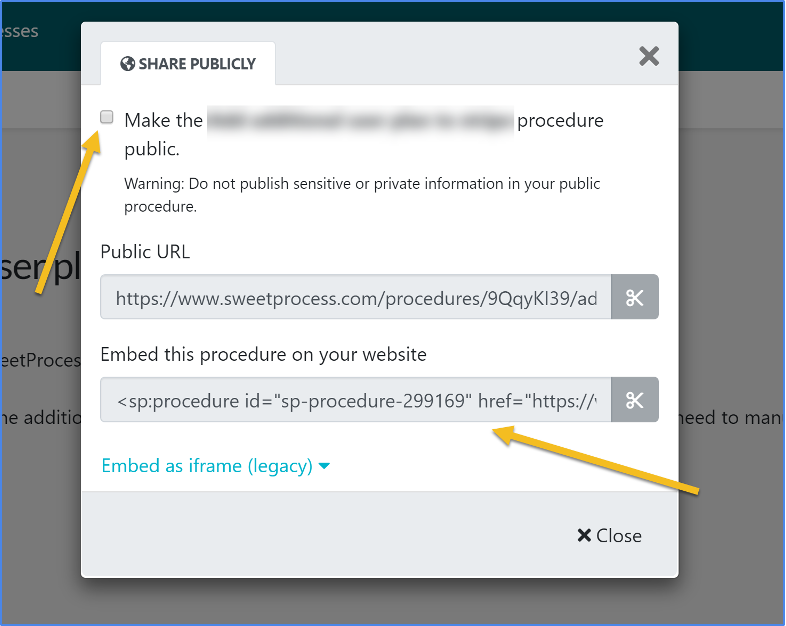
- In the sharing options, locate the checkbox, as shown in the screenshot above, and click on it to make the document public.
- After making the document public, copy the embed code.
- Open your WordPress editor or the external website where you want to embed the procedure or policy and paste the copied embed code into the appropriate location within the WordPress editor or external website.
- Save or publish the changes to apply the embedded procedure or policy.
Note: SweetProcess offers two options for the embed code: Javascript embed code and legacy iframe code. If the Javascript code doesn’t work, you can use the iframe code as an alternative. The difference between these two codes is that the Javascript code automatically resizes to fit the area. In contrast, the iframe code has a fixed size that may require manual height and width adjustment.
● Integrations
Guru offers a wide range of integrations with popular platforms like Google Workspace, Microsoft Teams, Slack, and more, allowing users to connect their knowledge base to existing tools, streamlining workflows, and ensuring easy access to information.
In comparison, SweetProcess offers seamless integration with over 1,000 apps through their API or Zapier. Here’s how to connect SweetProcess with other apps through Zapier:
- Navigate to the SweetProcess API Token page within your SweetProcess account.
- Create a new token on the API Token page.
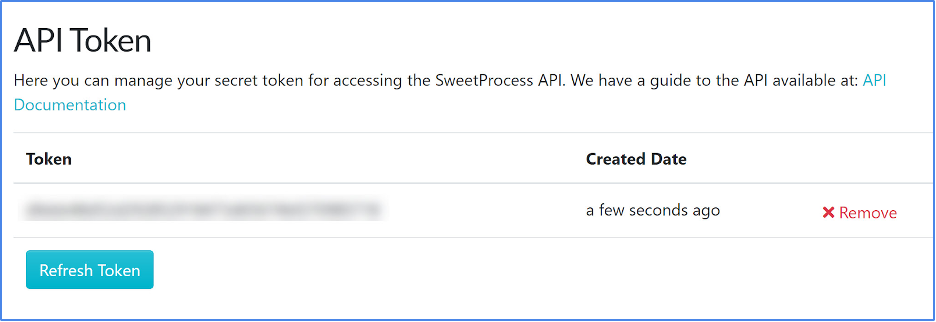
- Copy the newly generated token, as you will need it for Zapier integration.
- Next, go to the SweetProcess Webhooks page and locate the “Add SweetProcess to Zapier” button.

- Click on the button to be redirected to Zapier.
- In Zapier, click “Accept Invite & Build a Zap” to proceed with the integration. Please note that SweetProcess Zapier integration is currently in beta.
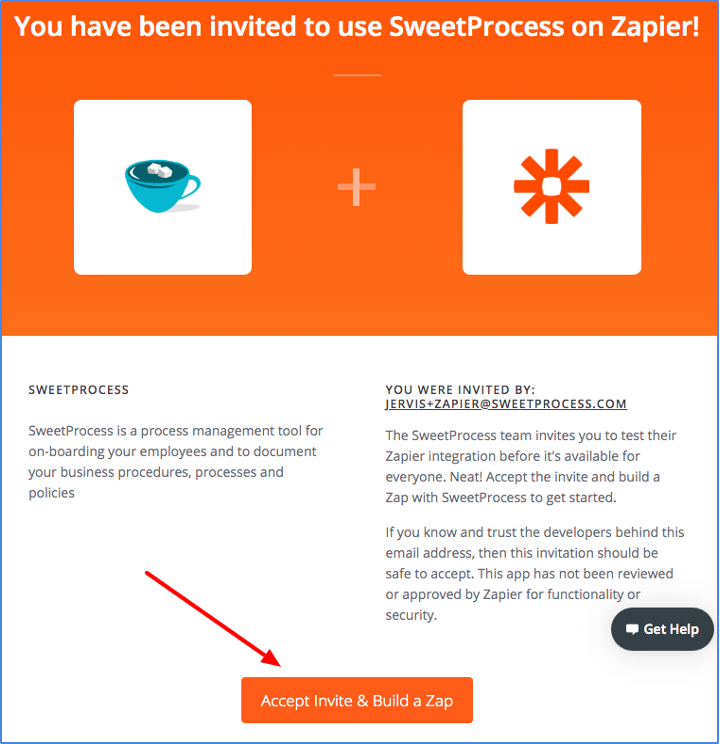
- After accepting the invitation, you will be redirected to your Zaps page on Zapier.

- Click the “My Apps” link to connect Zapier to your SweetProcess account.

- On the apps list page, search for “SweetProcess” and click on the SweetProcess logo once it appears.
- A window will pop up, asking for your account authorization token. Fill the form field with the token you generated in Step 3 and click “Yes, Continue.”

- Once you’ve added the authorization token, you will see your SweetProcess account connected to your Zapier account and ready to be used.
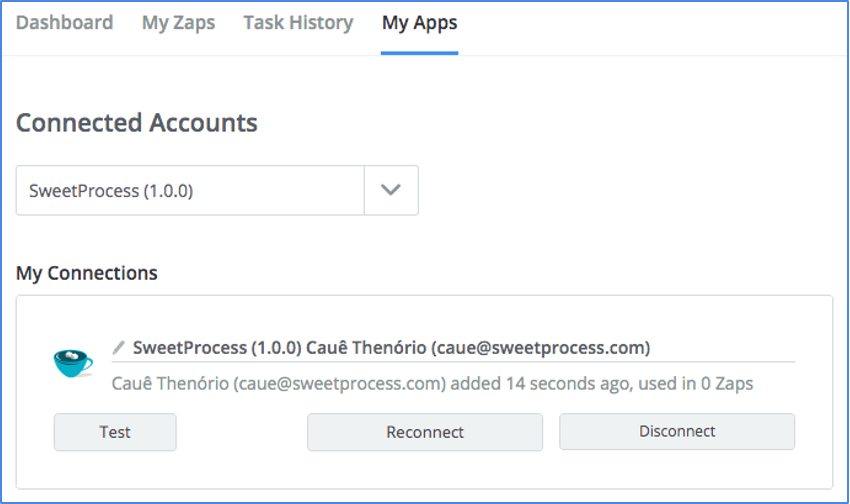
● Security and Control
Guru offers granular access control, allowing administrators to define user roles and permissions and protect confidential information. SweetProcess also offers access control and permissions, allowing administrators to restrict access to sensitive or confidential processes. To restrict access to information on Guru, you can create a restricted card or make an existing card restricted.
On the other hand, SweetProcess also allows you to limit access to SOPs and policies to only needed team members through the following steps:
- Open SweetProcess and navigate to the document, SOP, procedure, or policy you want to restrict access to.
- Click on the document to open it for editing or select the document from the list of documents.
- In the document editor, locate the “Action” settings.

- Click “Teams.”

- Select the team that should have access to the document. This can be done by searching for their names or usernames in the user list and granting them the appropriate access level.

- Save the changes to apply the access restrictions to the document.
You can customize this process further by assigning roles to each team member or creating procedures, processes, and policies under the team. The document will now be accessible only to the selected team members with the assigned access level.
● Knowledge Management
Guru and SweetProcess enable organizations to capture, organize, and share knowledge effectively. They provide centralized repositories for storing and accessing organizational knowledge, facilitating collaboration, and ensuring consistency in operations.
SweetProcess provides a more effortless method of creating a knowledge base. Here’s how you do it.
- Click on the “More” dashboard link to reveal a drop-down menu.

- Click on the “Knowledge Bases” button.

- Click the “Create Knowledge Base” button once the new page loads.

- Enter the title of your knowledge base and click the “Continue” button.

Guru vs. SweetProcess: For SOP Documentation

Documenting an SOP With SweetProcess
Here is a step-by-step process to create an SOP using SweetProcess.
Step 1: Click on the “Procedures” tab.

Step 2: Click on the “Create Procedure” button on the top right-hand side once the page opens.

Step 3: Enter the SOP title, add the procedure to a team or multiple teams by clicking on the checkbox, and click on the “Continue” button.
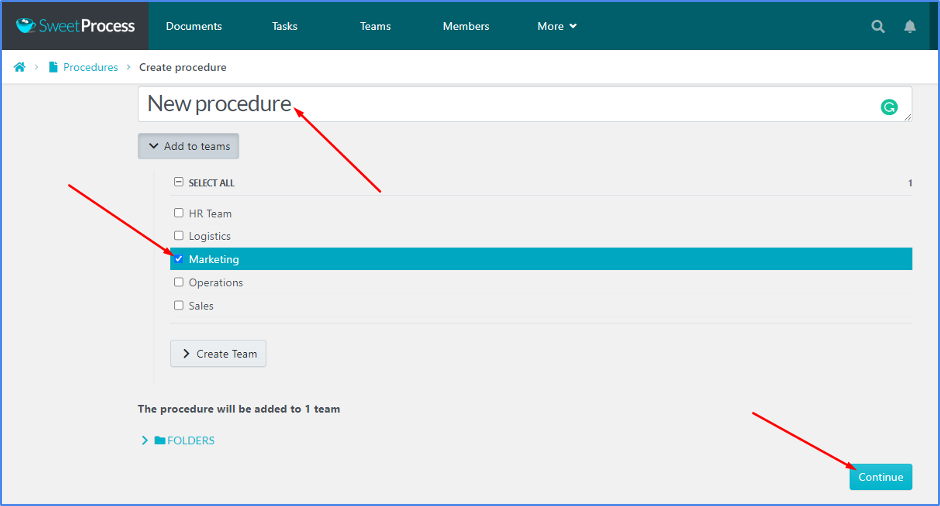
Step 4: Click on the SOP title to add a description and click “Finished Editing” once done.

Step 5: Click on the “Add a Step” button.

Step 6: Assign a title. Add a description to the step, and click “Finished Editing” to save the draft.

Step 7: Click the “Add a Step” button to add a new step. Repeat steps five and six above and save the details of the new steps.

Step 8: Click “End Step” once you’ve added all the steps.
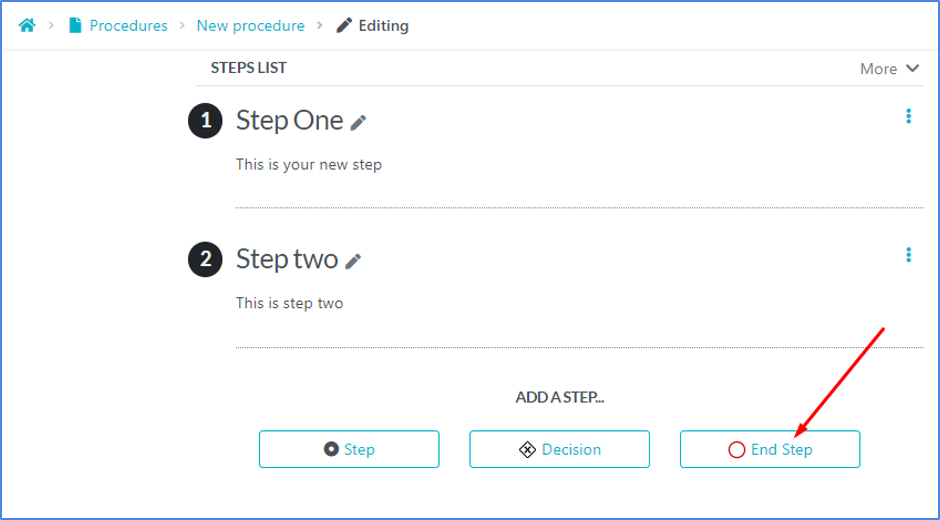
Step 9: Click on “Approve” once you’re through documenting all the procedure steps to make it live.

Documenting an SOP With Guru
The process of creating a standard operating procedure with Guru is quite similar to that of process documentation and policy documentation. The only difference is the title of the document you’re creating.
There are two basic steps to follow to create your documents.
Either make a collection for your topic and then add Cards containing relevant information, or customize one of the existing templates.
In Guru, information is stored in cards. These cards are concise and precise and have been verified by experts on your team. You can create as many cards as you want.
Creating an SOP, Policy, or Process Document With Guru
Step 1: Create a collection for your topic.
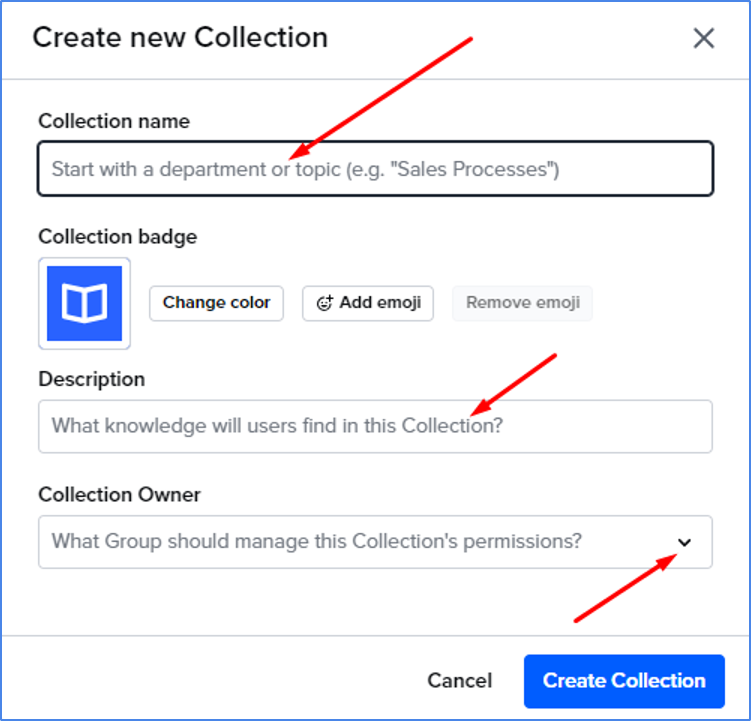
Step 2: Create a board.

Step 3: Input the board name and a short description in the space provided.
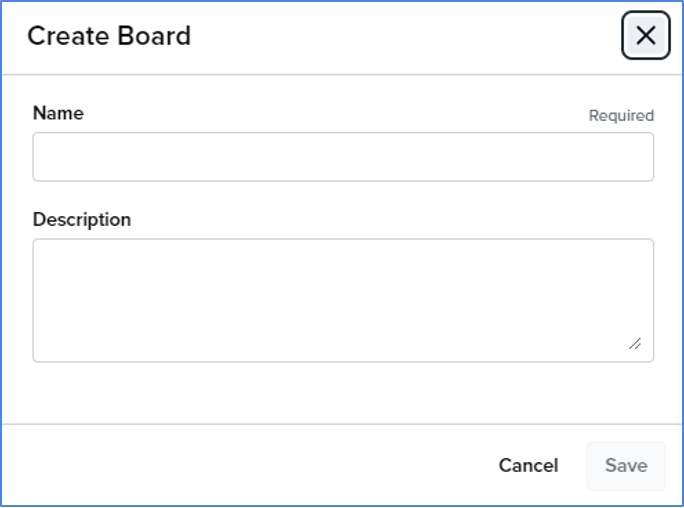
Step 4: Click the “Create a Card” button.
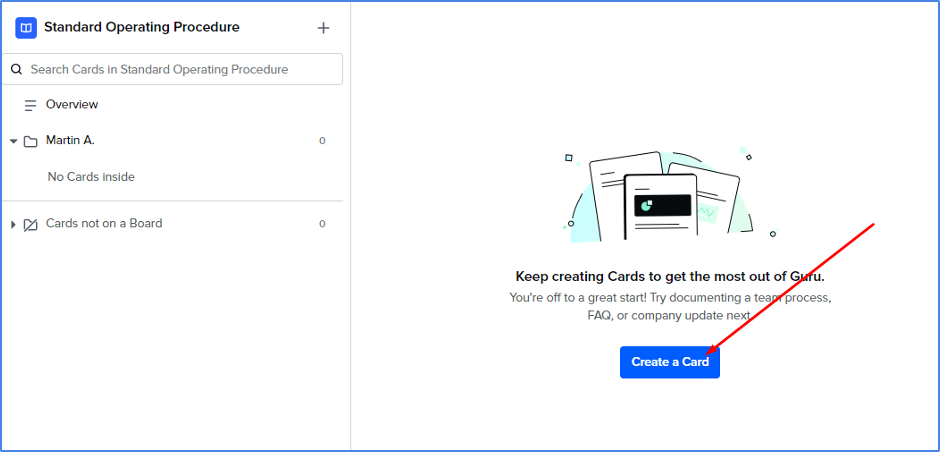
Step 5: Create a new card or select from a template your team created.
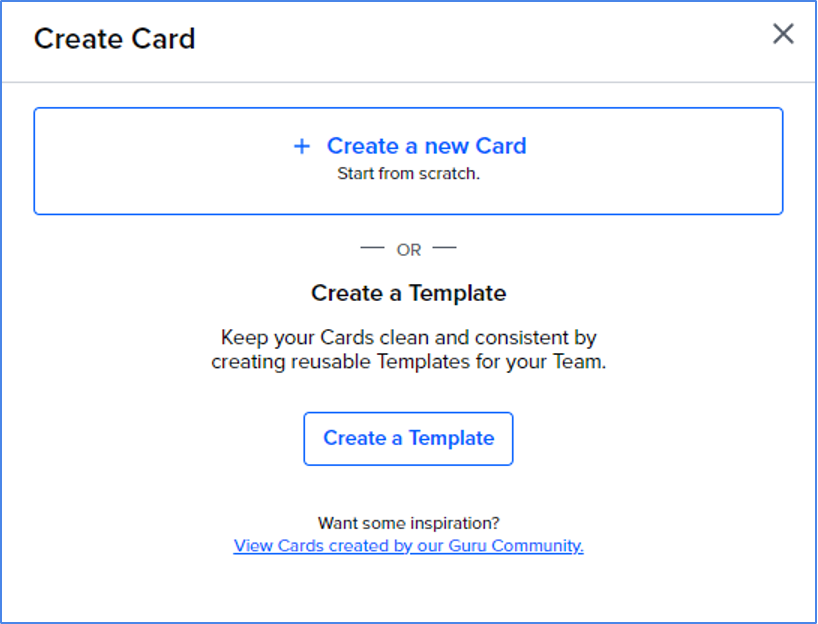
Step 6: Add a title for the card, create and format the card’s content, then click “Next step.”
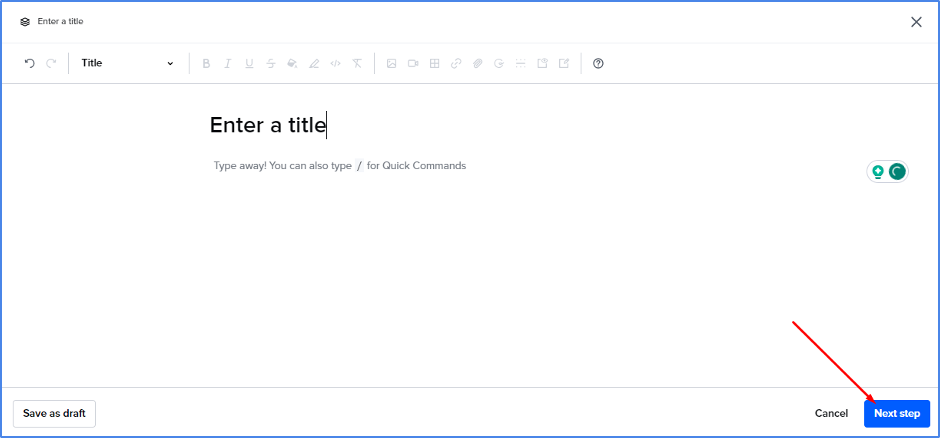
Step 7: Choose a collection for the card to be stored in. You can only select collections that you are authorized to access, and you can always move the card to a different collection later.
Step 8: Optional: Choose a board for the card to be on.
Step 9: Optional: Add applicable tags to help users find this card in their search.
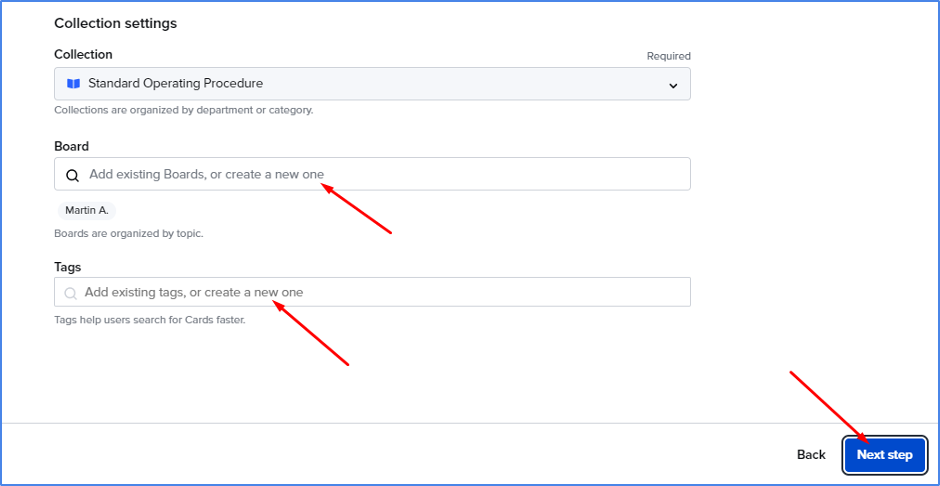
Step 10: Select the verifier and verification interval.
Step 11: Decide who can access the knowledge on this card.
Step 12: Finally, click “Publish Card.”
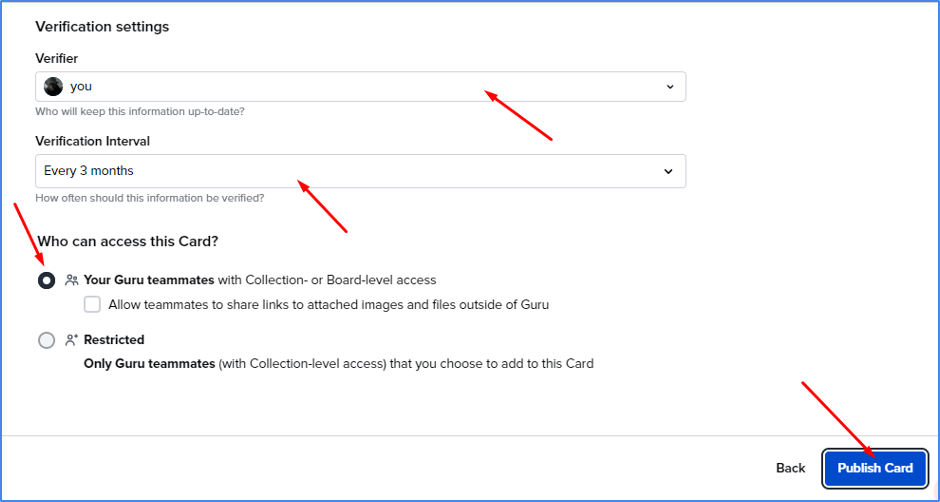
Step 13: Add more cards to the previous board you created.
Guru vs. SweetProcess: For Process Documentation

Documenting Processes with SweetProcess
Step 1: Log in to SweetProcess via the home page.

Step 2: Click “Processes” on the top navigation bar.

Step 3: Once the page opens, click the “Create Process” button in the top right corner. Alternatively, you can click the “Create a Process” button in the middle of the page.

Step 4: Enter the title in the space marked “Process Title.”

Step 5: If you’re creating a process for the first time, you must create a new team. To do this, click “Add to Teams.”

Step 6: Click “Create Team.”
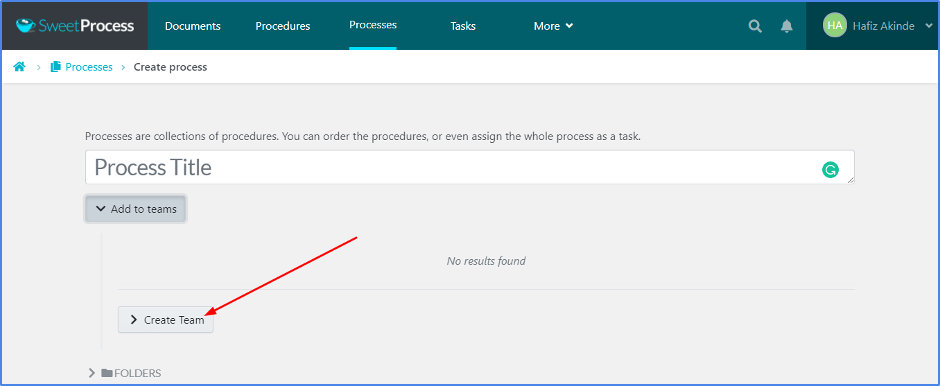
Step 7: Name your team and then click “Create Team.”
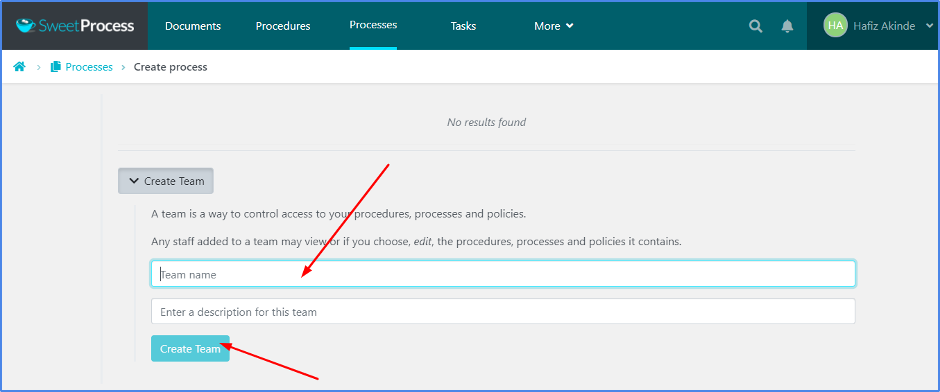
Step 8: The system automatically checks the new team you just created. You may then create your first process by clicking on “Continue.”

The process you just created will save directly to draft, and you must approve it to make it go live.
Step 9: Click “Approve.”

Congratulations! You just created your first process in SweetProcess.
Process Documentation With Guru
To document processes with Guru, you can follow the same process used to document an SOP with Guru, as explained in the previous chapter. The only differences are in the labels, tags, and titles used.
Guru vs. SweetProcess: For Policy Documentation

Documenting Policies With SweetProcess
To document policies using SweetProcess, follow these simple steps:
Step 1: Click on the “Policies” tab.

Step 2: Click on the “Create Policy” button on the top right-hand side of the page once the page opens up.

Step 3: Enter the proposed policy title.

Step 4: Add the policy to a team or multiple teams by clicking on the appropriate boxes.

Step 5: Click on the “Continue” button.
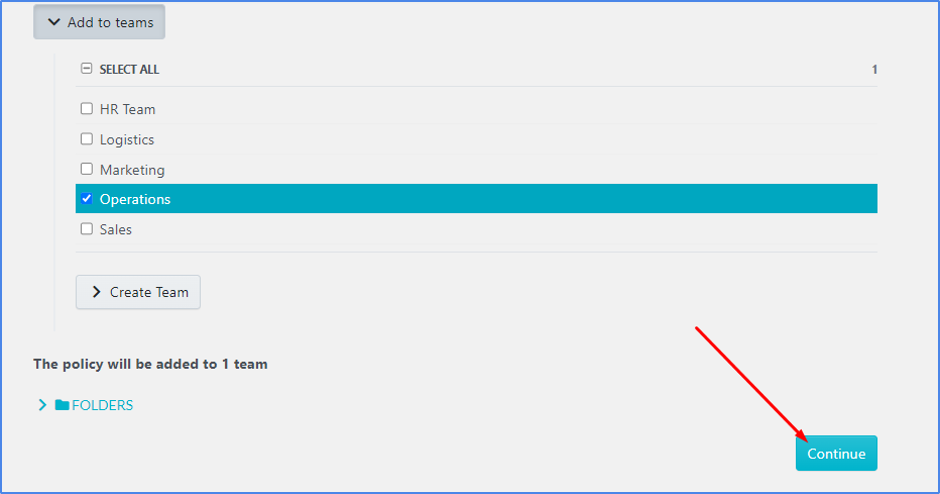
Step 6: Click “Click here to edit policy content” to add your policy content. Once done, click on “Save changes” to affect the changes needed.
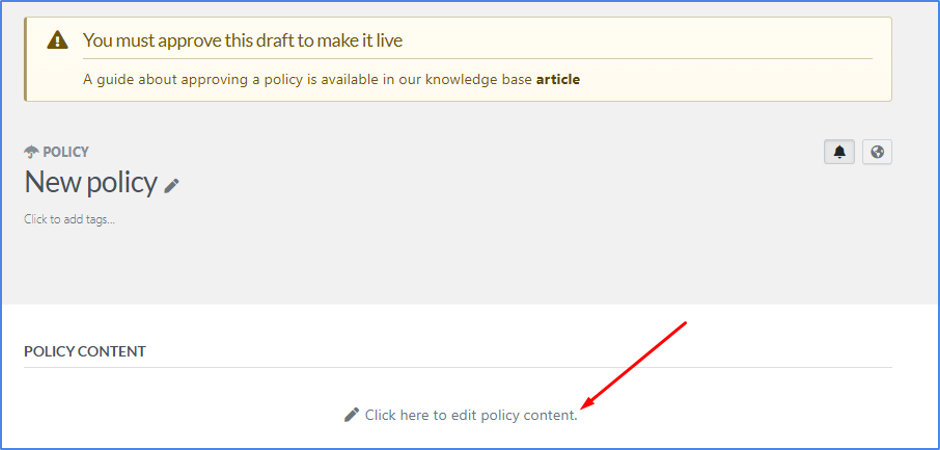
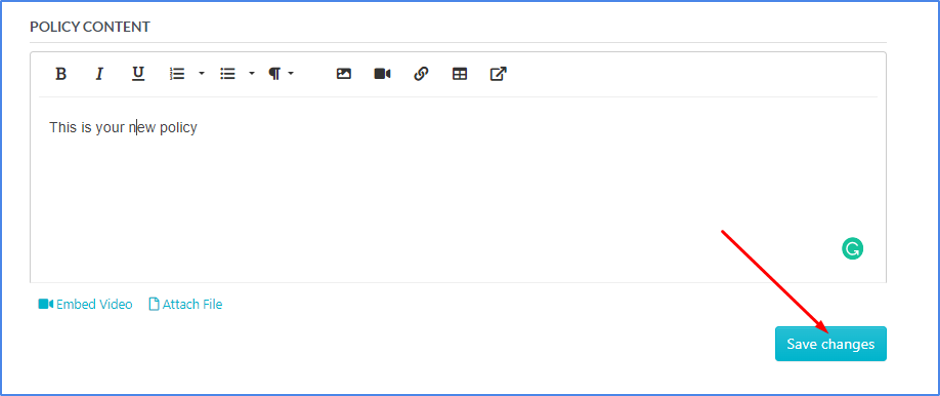
Step 7: Click “Approve” to make the policy live.

Policy Documentation With Guru
To document policies with Guru, you can follow the same process used to document SOPs and processes with Guru, as explained in the previous chapter. The only differences are in the labels, tags, and titles used.
Guru vs. SweetProcess: Which Tool Is Better for You?
Having the right tool for task management and documentation process can significantly affect productivity and enhance a streamlined workflow in an organization. Interestingly, Guru and SweetProcess stand out among the tons of software most organizations adopt for improving their business processes.
But the big question is, which of the two tools is better for SOP, process, and policy documentation?
We’ll answer this question by looking at SweetProcess features that Guru lacks, what users say about SweetProcess, and Guru’s drawbacks based on user reviews.
12 SweetProcess Features that Guru Lacks
SweetProcess offers several features that Guru lacks, making it a more comprehensive solution for businesses that need to streamline their workflows and improve efficiency.
1. Intuitiveness
SweetProcess stands out as an intuitive and user-friendly tool. The platform requires almost no learning curve, allowing users to easily navigate the interface and access its features. When new users sign up, the software provides a tour showing them the main features.
Creating policy, process, and SOP documents with SweetProcess is simple, direct, and effective. Even first-time users can quickly produce high-quality policy documents due to SweetProcess’s user-friendly interface.
2. Seamless documentation
SweetProcess is the best tool to help you document your processes, procedures, and policies. Its dedicated platform allows businesses to create procedures through clear and detailed step-by-step instructions, with multimedia elements such as images, videos, and links.
The platform also offers features for requesting approvals and sign-offs and converting procedures into actionable tasks for their team members. In addition, the built-in AI feature allows for the easy creation of business procedures from scratch without manually writing them. Also, you can design all your business policies, document task procedures, and even bring multiple task processes together to make a complete and comprehensive workflow.
3. Ability to find and organize documents easily
SweetProcess search function makes it easy to find documents by searching a pool of documentation based on name, tags, and relevance. Additionally, users can create folders to organize their documents and assign them to different departments. This makes it easy to find the right document at any given time.
4. Importing existing procedures and policies
SweetProcess allows users to import their existing procedures and policies into the platform from other applications, such as Microsoft Word or Google Docs. This simplifies the transition from other systems or manual processes, ensuring a smooth documentation migration.
5. Easy export of documents
SweetProcess allows exporting documents, including procedures, policies, and processes. Users can create offline manuals or export documents in various formats for sharing or archiving purposes.
6. Support for version history
SweetProcess supports the version history of documents, allowing users to track changes and revisions over time. This feature ensures that users can refer to previous versions if needed and maintain a comprehensive record of document evolution.
7. Converting existing procedures and policies into a knowledge base
SweetProcess allows users to create a knowledge base from their existing procedures and policies. Users can choose which documents to convert into a knowledge base and customize the process by adding relevant information, such as FAQs.
8. Ability to update any given policy
SweetProcess allows users to update policies by adding or editing relevant information without having to rewrite the entire document. This feature ensures that users can keep their content current while maintaining a record of changes made over time.
9. Customization and Branding
With SweetProcess, you can customize the appearance and layout of your documented processes, aligning them with the organization’s branding and enjoying desired visual appeal.
10. Accountability
In addition to its efficient documentation process, SweetProcess gives its users the unique advantage of tracking who performs a particular task. That is, it provides a medium of accountability to users. Using SweetProcess will not only document processes but also allows you to keep track of individual performance. As such, it makes it easy to identify or trace who among a team is responsible for the successes or failures of a task, as the case may be.
11. Safe information storage
One of the rare advantages SweetProcess has over other SOP software designed for startups is the feature of keeping safe vital informational materials. It gives users a convenient and accessible means of storing information such as training materials, compiled videos, and other important information that can be accessed for use by both new hires and current staff. This helps you eliminate the recurrent cost of training new onboard staff and serves as a learning platform or a knowledge base for every member of an organization with access to SweetProcess.
12. Procedure referencing with ease
Referencing one document to another can be complicated and time-consuming, especially if you’re using a basic documentation app that isn’t designed for this purpose. Fortunately, SweetProcess has a search function that allows users to easily find relevant processes linked together. This feature saves time spent searching for information and boosts productivity.
What Users Say About SweetProcess
In a recent interview, Carter Harkins, co-founder of Spark Marketer, shared how SweetProcess boosted its employees’ confidence in creating standard operating procedures. He emphasized that the key to their success was the ability to categorize tasks into clearly defined processes. SweetProcess has made it easy to access the relevant procedures and has standardized the framework for documentation, making it easier for everyone to find what they need.
Before finding SweetProcess, Spark Marketer had no standard operating procedures, leading to operational gaps in their business. SweetProcess has helped them establish SOPs that have improved employee efficiency and accountability.
Rise25 also faced difficulties in managing its business due to the need for more structure in its files. Their SOPs in Google Docs needed to be more efficient, causing a hindrance in their progress. But after adopting SweetProcess, the team experienced significant relief. SweetProcess simplified its system by providing a smooth onboarding process, documenting procedures, and creating easy-to-follow guidelines. They had high expectations when they signed up, and SweetProcess delivered immediate results within the first week or two. Their business process documentation and workflow improved impressively.
Apart from these experiences shared in interview sessions, SweetProcess has garnered positive feedback from users across various industries, showcasing its effectiveness in addressing common pain points and driving operational excellence.
1. Streamlined operations and increased efficiency
SweetProcess has been praised for its ability to streamline operations and improve efficiency. This is a massive benefit for businesses looking to leverage automation without sacrificing quality or accuracy, even while working remotely.
2. Simplified onboarding and training
The software has received praise for making onboarding, training, and implementation easier to manage. One SweetProcess user said training new employees with training materials and videos became easy when they started using SweetProcess.
3. Enhanced clarity and compliance
The software has also been praised for improving clarity and compliance. One user said the company could more thoroughly document its processes using SweetProcess. This helped them comply with legal requirements and reduce the potential for human error.
Guru Drawbacks Based on Customer Reviews
Before deciding which tool is best for your business, it helps to know what others say about each product. Here are some of the most common Guru drawbacks you may encounter while using the tool.
1. User interface
A user reported requiring extra time to learn its interface and how it works. This can be challenging for new users not exposed to knowledge management systems. The interface is also quite complex, making it difficult for users to navigate the features seamlessly.
2. Search functionality
Even though Guru boasts of a well-advanced search function, it can still be challenging. Many users complained of the app’s inconsistency in searching for specific information. Many of them have reported that the search function is not intuitive and doesn’t always return accurate results, especially when you get spellings wrong, making it a hassle to find what you need. A user expressed that while the software appears to be organized, it still gives off a sense of disorganization.
3. Changes in pricing and features
The software is constantly changing, which can frustrate users. It’s not uncommon for Guru to change the pricing and features of its products without warning, which means that you may end up paying more than expected or losing a feature that was important to your business. This was the case of a user who quit Guru and moved to another provider.
4. Editing and customization
Several users have expressed frustration about the software’s lack of customization options. Additionally, some have reported difficulty in understanding the metrics despite the initial promise of user-friendliness.
5. Inadequate features
Despite offering many features, user complaints indicate that key elements are missing: like seamless copy and paste from Google Drive, the option of saving video directly, and the ability to import and export data. This can be a problem if you want an all-in-one solution for an efficient workflow.
6. Difficulty in organizing content
Other users have found it challenging to organize and structure content within Guru effectively. This may result in a cluttered and less intuitive interface, making navigating and finding the necessary information harder.
7. Poor customer support
One major deficit attributed to the use of Guru by users is the slow or poor responsiveness in addressing complaints from its users. A user corroborated this deficit with an unending wait to get feedback when issues arise from using the software.
8. Outdated knowledge information
Even though it supports information storage, one thing the user mentioned it lacks is that it does not keep updated information. It is limited to the information it has on its own.
9. Limited formatting options
Users have also expressed dissatisfaction with the limited access to some formatting options. Due to the app’s limited formatting options, users have difficulties creating customized content, thus restricting its visual appeal and flexibility.
10. Speed
Several users have complained about Guru being slow and losing in-progress cards when the browser crashes.
Guru vs. SweetProcess: Why SweetProcess Trumps Guru

Based on the information presented above, it is clear that SweetProcess is the superior tool for documenting processes, policies, and SOPs. If you’re still having trouble deciding between SweetProcess and Guru, we’ve compiled a list of their main features to assist you in making a well-informed decision.
| SweetProcess | Guru |
| SweetProcess offers a user-friendly interface for managing and documenting processes making it easy for users to navigate and utilize its features effectively. | Guru provides a user-friendly interface but may have a slightly steeper learning curve than SweetProcess. |
| SweetProcess offers a structured approach to documenting processes, allowing users to create clear, step-by-step instructions. It emphasizes process management, task execution, and operational efficiency. | Guru also provides process documentation capabilities but focuses on knowledge management and collaboration. It allows users to capture and share knowledge in the form of cards. |
| SweetProcess allows users to link policies directly within procedures, ensuring that employees have access to relevant policies while executing tasks. This integration enhances compliance and reduces the risk of mistakes. | Guru supports creating and organizing policies and guidelines but may have a different level of integration with procedures. It focuses more on knowledge sharing and collaboration. |
| SweetProcess supports creating and documenting standard operating procedures (SOPs) serving as employee guidelines. It also enables the conversion of procedures and policies into a comprehensive knowledge base. | Guru allows the creation of knowledge bases and repositories but may not have the same level of focus on standard operating procedures. |
| To cap it all, SweetProcess offers flexible plans catering to teams of various sizes and needs, including a free Starter plan and a Business plan starting at $99 monthly. It also provides an Enterprise plan for larger organizations with custom requirements. | Guru’s pricing is based on a per-user model, and while it offers a free plan for small teams, the costs can accumulate as the team grows. It offers Business and Enterprise plans with advanced features but may increase expenses compared to SweetProcess. |
From the start, it is evident that SweetProcess offers a superior user experience compared to Guru. It has better collaboration features, version control, knowledge sharing, customization options, and integration capabilities. Using SweetProcess streamlines business processes, making them more efficient and consistent, leading to increased productivity and smoother operations.
Although Guru has some benefits, it is less user-friendly than SweetProcess. With its complicated setup, limited formatting options, and inconsistent search results, SweetProcess is the better option for organizations looking for a comprehensive and efficient task management and process documentation solution.
Want to see SweetProcess in action and start creating outstanding documentation for your company? Get started today by signing up for a 14-day FREE trial. No credit card is required.
